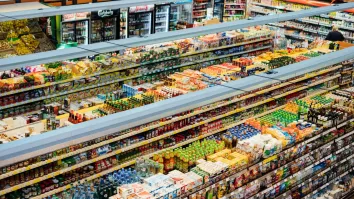
Tech savvy shoppers drawn to digitally-enhanced shopping experiences
73% of customers expect rapid catalogue-to-cart shopping with the use of mobile devices
The demand for more tech-enabled shopping experiences was the main topic in this first podcast episode titled Rise of In-store and Online Shopping. In partnership with Retail Asia, this dialogue features George Pepes, APAC Vertical Solutions and Marketing Lead for Retail, Healthcare and Hospitality at Zebra Technologies and Devang Merchant, Director at Markss Infotech Ltd.
George and Devang discussed topics ranging from the latest shifts in shoppers’ consumption behaviors, to navigating online and in-store operations, as well as how retailers can harness technology to deal with rising customer expectations in a post-pandemic world.
A “do-it-yourself” approach
Findings from Zebra’s 14th Retail Shopper Study in 2021 showed that despite the return of traffic into brick-and-mortar stores, 73% of customers expect their journey to be much quicker, with many of them using their mobile devices to compare prices or lookup information of items. To deliver on-demand requires agility and speed from forward-thinking retail management, the shopper experience has extended far beyond the physical stores into online or combination journeys.
George noted that consumers today look for digital experiences within the store, from ordering to delivery – “The key thing to understand is that people are looking at a seamless blend between online and offline. People are really starting to shift their shopping behaviors, jumping from an online to offline channel. APAC saw the second highest jump in consumers using their mobile phones to shop online. That is 81% in 2021 versus 72% in 2020.”
Devang added that consumers in India are returning to stores – but with massive changes to their expectations and behaviors. “Many retailers are responding by transforming into an omnichannel model, from the traditional brick-and-mortar retailers. They are now equipping their store associates with the right enterprise mobile devices to quickly and effectively respond to customers.”
George added that this is because habits that formed during the pandemic, such as choosing to shop online, will likely stick with most consumers.
“Things like ordering from home or ordering and delivering from the store to their homes will continue to stick. We are actually starting to see a bit of a blend of that now,” George said.
Bridging the trust gap
Zebra’s 14th Retail Shopper Study also found that only 38% of shoppers trust retailers to fulfil their online/mobile orders, whilst 51% of retail associates have full trust that their employers have such capabilities. Improving consumer levels of trust in retail industries require decision-makers to embrace digital solutions for front-line staff, which includes improving inventory planning and execution in stores and throughout the supply chain.
Supply chain issues continue to plague retailers, making real-time visibility of in stocks a challenge for stores, with 44% of associates finding it a concern. Companies need to deploy better inventory management tools to improve accuracy and provide transparency, to increase satisfaction both for shoppers and associates.
Devang recalled a large retail customer who had a very traditional business model. During the pandemic, the retailer became quite aggressive in transforming themselves dynamically, remodeling themselves from a traditional brick-and-mortar retail operation to an omnichannel business model.
“What they did was to convert a portion of their large hypermarkets. This was possible only by using technology utilize the same warehouse inventory for their regular retail stores as well as their e-commerce business, thereby improving their response capabilities and grow exponentially by meeting customer needs. This proved that their investment in technology was the right decision,” Devang explained.
Technology trends in retail
With consumers demanding more tech-enabled shopping, most retailers might rush to invest on technology. However, Devang notes this needs to be done wisely.
“A key requirement for retailers is to adopt technology that will enable real time visibility of their inventory. They need to combine this with analytics, that will help give the insights to make the most impactful decisions.”
“Furthermore, understanding customer behavior and buying preferences is also critical for business success. Finally, the biggest factor is offering the finest quality merchandise and widest choices to customers. Even if we use the best technology, we cannot take away the importance of differentiating oneself from competitors,” Devang said.
To find out more, this podcast is available on Spotify and TransistorFM.

















 Advertise
Advertise





